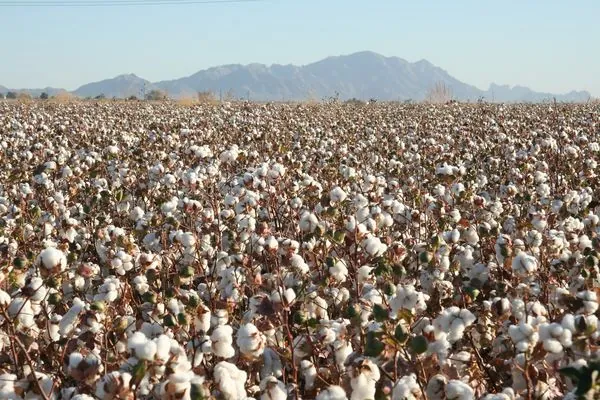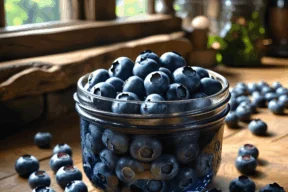Farm Facts That Feed You
Ecological Benefits of Cotton

Cotton’s Enduring Sustainability, Our “Fancy Fabric”
In a Word: Despite its well-earned reputation of casual comfort, the actual word “cotton” is an English version of the Arabic “qutun” or “kutun,” a generic term meaning fancy fabric. One of cotton’s original popular names was “vegetable wool.”
Cotton and Sustainability: Cotton is a natural fiber, grown from seed planted in prepared soil and spun into a soft yarn. Cotton farming has made, and continues to make, huge strides toward sustainability and environmental responsibility.
Cotton Is Biodegradable: You can bury a pair of men’s underwear and within weeks the cotton fiber will fully biodegrade. What remains is the elastic waistband, made of synthetic fibers. 100% cotton is biodegradable.
Cotton Represents 35 Years of Reduced Environmental Impact: According to the 2016 Field to Market Report, In the last 35 years land use for cotton has gone down by 31%, soil loss has gone down by 44%, water use for cotton has gone down by 82%, energy use for cotton has gone down 54%, and GHG has gone down by 30%.
Cotton is Drought Tolerant: Cotton seed has been developed to be drought-tolerant and most cotton harvested requires little irrigation to grow, except in California and Arizona where the largest yields per acre are realized because of managed, precise irrigation. 60% of U.S. cotton and 50% of world cotton is grown with rainfall. Rainfall can degrade the quality of the cotton fiber, however, and why California and Arizona cotton is considered such a high-quality, high-yielding cotton.
Cotton has a Long Growing Season: In Arizona, cotton is typically planted in April (earlier in Yuma) and harvested in late November through December.
Cotton is a fruit: With seed within the “cotton boll,” cotton is recognized as a fruit, just not in the typical sense. Proof of its fruit identifier, insects of all types love this plant and why farmers must be vigilant in protecting their crop from destructive pests.
The Enduring Cotton Seed: Cotton seeds are tough enough to survive travel across oceans on the wind. This could explain how botanists are not sure where the first cotton plants came from, and probably why similar varieties sometimes grow thousands of miles apart. But it does explain why the Hohokam Indian tribe was growing it thousands of years ago here in the southwest.
Cotton is Global: Even though cotton is estimated to be more than 5,000 years old, the people who grew and used it never met each other. Some of them even lived on different sides of an ocean, but astonishingly enough, they still managed to develop similar tools to clean, prepare, spin, and weave cotton. Today, approximately half of all textiles are made from cotton.
Cotton and Peanuts: The American South owes its success in the peanut-growing industry to cotton—sort of. The boll weevil created an economic crisis all over the American South by laying its eggs in the cotton bolls, destroying much of the crop in the process. In Enterprise, Alabama cotton farmers watched this helplessly until someone suggested they try growing peanuts instead, which is now one of their most successful crop products! In the meantime, a boll weevil eradication program has nearly wiped out the little pest.
Arizona’s Quality Cotton: Arizona cotton, along with California cotton, is some of the whitest, highest-quality cotton around. One main reason is that Arizona and California irrigate the cotton. With so little rainfall in the southwest, the cotton fiber is not at risk for compromised quality due to wind and rain.
Arizona’s Quality Long Staple Cotton: One of the finest extra-long staple (ELS) cotton was developed and grown right here in Arizona. The USDA in Sacaton, Arizona, had an ELS breeding program that helped develop the ELS cotton.
Cotton Is Natural, Unlike Synthetic and Man-made Fibers: The natural origin of cotton distinguishes it from other synthetic and man-made fibers. Cotton is grown on farms throughout the United States. Unlike synthetic fibers such as polyester, cotton is natural and grows from seeds planted in prepared soil.
Cotton Is Recyclable: Cotton Incorporated has created a denim recycling program called Blue Jeans Go Green™. The Blue Jeans Go Green™ initiative recycles old denim jeans to be preprocessed and converted into insulation. The program, created in 2006, has collected about three and a half million pieces of denim and diverted over 1,950 tons of textile waste from landfills.
Cotton is ubiquitous: It’s the most widespread, profitable mostly non-food crop in the world, and cotton production provides income for more than 250 million people. Cotton is also the only agricultural commodity that provides both fiber and food since cottonseed can be used for cooking oil and livestock feed.
Cotton clothing doesn’t shed Microplastics: You may have heard the term “microfibers,” which refers to the minuscule fibers that shed through regular wear and into our waterways when we launder our clothing. Clothing microfibers affect aquatic life and the aquatic food chain.
Cotton, a natural fiber made of cellulose, biodegrades in wastewater, saltwater, and freshwater, and does not contribute to widespread microplastic pollution. In a recent study conducted by Cotton Incorporated, a 100% polyester sample saw minimal deterioration, while a 100% cotton sample had disintegrated 76% in wastewater in 250 days. By comparison, rayon disintegrated 60% in the same conditions and timeframe, and polyester disintegrated only 4%.
Cotton’s 6 Sustainability Goals for 2025: The U.S. cotton industry has set 6 key sustainability goals to achieve by 2025:
- Increase soil carbon by 30%.
- Increase land use efficiency by 13%.
- Decrease greenhouse gas emissions by 39%.
- Decrease soil loss per acre by 50%.
- Decrease water use by 18%.
- Decrease energy use by 15%.
Says the Cotton LEADS Program, “Cotton producers and industry organizations developed these goals using science-based evaluations and measure our progress to them with independent verifiable data. We outline specific strategies for reaching our sustainability goals, provide public updates, and constantly recruit growers, millers, producers, and retailers to join in these efforts through efforts like the U.S. Cotton Trust Protocol.”
The US cotton industry continues to push what is possible in cotton. These sustainability goals with robust data collection and traceability will help set cotton up for success. The U.S. Cotton Trust Protocol is the voluntary sustainability program and traceability platform for U.S. cotton. It’s the only program offering quantifiable measurements across six key sustainability metrics and was the first to offer article-level traceability.
Sources: Cotton Incorporated, National Cotton Council, The Cotton LEADS Program, Field to Market.org, Arizona Cotton Council, Arizona Farm Bureau and our Arizona Cotton Farmers.
![]() Virtual Ag Tour Series: Cotton Gin
Virtual Ag Tour Series: Cotton Gin
![]() Virtual Ag Tour Series: Cotton Farming
Virtual Ag Tour Series: Cotton Farming
Our Videos
View all VideosOur Latest Posts

Nutrition for Cycling: How Proper Nutrition Fuels Cyclists from the First Mile to the Finish Line
Cycling is a sport built on rhythm, the turning of your pedals, the cadence of your breath, and the flow of your energy as the…

The Scoop on Salt
For the longest time I never understood why every baking recipe always called for a teaspoon or two of salt, even if the baked good…
Featured Recipes













